
The 5 Best Cuts Of Beef You're Not Eating
Tired of eating the same old meats? Practice nose-to-tail cooking with these 5 unique cuts of beef that support muscle growth and your sense of culinary adventure!
Our spear-wielding ancestors didn't get their sustenance from turkey sandwiches and hot dogs. Instead, when they took down their game, they practiced nose-to-tail cookery, which meant using all parts of an animal, from brain to hoof. Alas, it's a shame that this practice has fallen by the wayside and so many of today's carnivores seem to think that "meat" means only sirloins, pork chops, or chicken breast—but never beef cheeks or heart.
Offal, which literally means "off fall," or the pieces including tongue, thymus, and liver that fall off a carcass when it's butchered, are downright nutritious and delicious! Sure, you have to be a little adventurous, but your culinary efforts will be rewarded. Plus, eating offal does the planet a good service by reducing the unnecessary waste of animal protein.
To help you take the plunge into new culinary territory and join the nose-to-tail movement, here are my top picks on how to make better use of some of the neglected parts of the cow, proving that offal ain't so awful after all!
Heart
Take this to heart: Beef heart is one of the easiest organ meats to work with in the kitchen. Since it has a taste and texture similar to more common cuts of steak such as sirloin, you could easily pass it off to eaters as such without them being the wiser. The ticker of a cow also provides a larger nutritional windfall for a cost that's friendly to your bank account—often less than a buck a pound.
Beef heart is low in saturated fat and high in muscle-friendly protein (20 grams in a 4-ounce serving), vitamin B-12, iron, and the potent antioxidant selenium. A 2015 study in the Journal of Nutrition found that maintaining optimal selenium levels can help keep you feeling chipper by improving mood and reducing the risk of depression.1
Best of all, depending on the size of the animal the heart was gleaned from, the organ meat could weigh as much as 3-4 pounds, letting you eat your heart out for a number of meals.
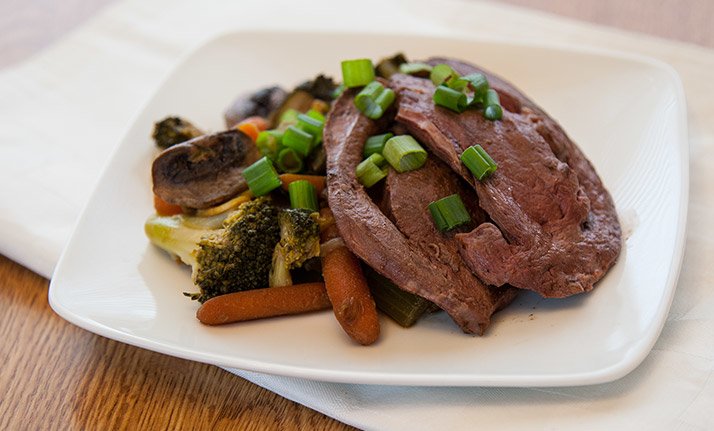
Eat It
You want to look for a heart that's firm, moist, and deep reddish-brown with a layer of fat around the top. Before cooking, simply slice off the fat as well as any connective tissue or silvery skin. You can then thinly slice the meat and cook it in a skillet on the stovetop or over the flames on the grill.
A word of caution: Since beef heart is very lean, it can quickly become unappetizingly tough if overcooked. So it's best cooked fast over fairly high heat and not past medium-rare. Heart works great in stir-fry, or try adding cooked slices to salads to beef up your greens.
Cold slices of cooked heart are even a stellar addition to sandwiches. The meat also takes well to all sorts of marinades.
Tongue
Once you get over your understandable squeamishness, overlooked cow tongue can deliver truly seducing, tender meat with praise-worthy flavor. In fact, when poached with aromatics like onions and garlic, tongue meat tastes very reminiscent of pot roast. I kid you not! And since a whole beef tongue can weigh up to 4 pounds, you'll get some serious nutritional bang for your buck. Among tongue's nutritional highlights are good levels of protein, testosterone-boosting zinc, and B vitamins including vitamin B-12.
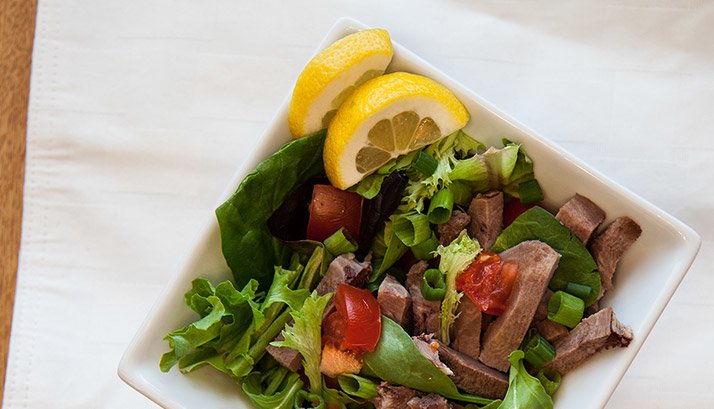
Eat It
The biggest hurdle to getting tongue onto your dinner table is its thick skin, which needs to be peeled off, and it's nearly impossible to do so from the raw meat. What you want to do is gently poach tongue in some liquid, after which you can easily peel off the skin.
Place the tongue in a large saucepan. Add 1 quartered onion, 4 peeled and smashed garlic cloves, 1 teaspoon whole peppercorns, 1 teaspoon salt, 1 bay leaf, and enough water to cover the tongue by 2 inches. Bring the mixture to a slow boil over medium-low heat, reduce the heat, and simmer very gently, partially covered, until the tongue is tender and easily pierced with a knife at its thickest part. This takes about an hour for each pound of tongue.
Remove the tongue from the poaching liquid and let it cool only to the point where you can handle it. Using gloves can help. If you let the tongue cool too much, the skin again becomes difficult to remove. Reserve the poaching liquid to use as a flavorful broth. To peel off the skin, start at the throat end of the tongue, and use a small knife to lift up some of the skin. Then scrape off any bumpy areas on the meat with the back of a chef's knife.
After peeling, slice the tongue thinly against the grain. Serve with salsa, chutney, herb sauce, gravy, or even in stir-fry or tacos. Cold slices of tongue are great in sandwiches or atop salads, too. Cooked tongue can be kept in the refrigerator for up to four days if stored in some of the strained cooking liquid. You can reheat slices for a couple of minutes in a skillet or the microwave.
Liver
While it was once a common cut of meat cooked in many households, liver has largely fallen out of favor with newer generations. That's a shame, considering that it provides a welcome relief from more pedestrian meats—yes, I'm looking at you, Mr. Chicken Breast—and delivers a bounty of nutritional goodness.
A mere 3-ounce serving of liver contains an impressive 18 grams of protein to keep muscle growth going in full force, and it's flush with vitamin A to help maintain your immune system in tip-top shape. Liver also blows away most other foods when it comes to vitamin B-12, a benevolent vitamin that's required for your nervous system to function optimally.
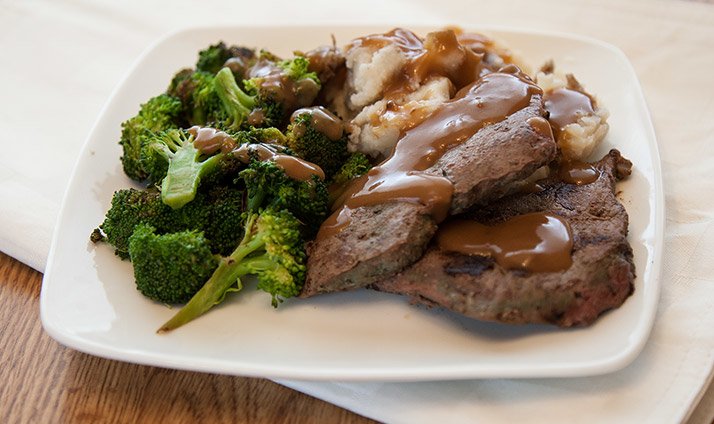
Look for liver at the butcher counter that's firm to the touch and shiny. There should not be any odd smell, dry patches, or slimy film.
Eat It
Before cooking liver, peel away any membrane that might be present by loosening it with a sharp knife and gently pulling it away from the meat. While most liver naysayers recall being served appetite-killing meat with a texture similar to shoe leather, the key to great-tasting liver is to cook it quickly in a hot skillet (ideally, cast iron) so that the outside sears while the interior remains tender and still slightly pink—about three minutes per side for a one-pound cut.
Soaking liver for up to eight hours in water spiked with salt and lemon juice before cooking can help dampen any strong flavor and work to tenderize the meat.
Kidney
It might sound strange, but this organ meat is a true pleasure with a rich flavor not that different from liver. From a nutritional standpoint, kidneys can show your muscles some love by providing an excellent protein-to-fat ratio of 7:1. Kidney is also chock-full of a range of essential nutrients including vitamin B-12, vitamin A, riboflavin, and selenium. Kidneys come in pairs, and you only want to purchase those that are shiny and firm with no dry or discolored spots and free of any "off" odor.
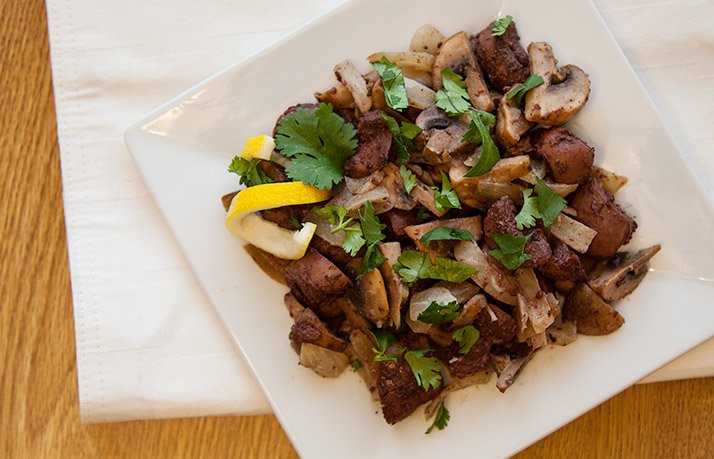
Eat It
As with liver, soaking kidneys in acidulated salt water prior to cooking will help reduce the strong, tangy flavor that can be off-putting to newbies. If you buy kidneys whole—which you should, for better quality—be sure to slice them in half lengthwise and remove the gristly white center of the organ before proceeding with a recipe. Also remove any membrane if present.
Cook the kidneys fast and hot until they're still slightly pink in the center, or long and slow in a braising liquid—anything in between will result in an unpleasantly tough meat. Cutting kidneys into bite-sized chunks makes for a quick skillet preparation.
Oxtail
While not technically an organ meat, inexpensive oxtail is a relatively underutilized cut of beef that you should embrace. In olden days, oxtail came from oxen, but now it hails most often from the tail of regular cattle. The tail is skinned and then cut into sections; each section has a marrow containing bone that's surrounded by meat.
Most people find oxtail looks less, well, odd than other odd bits of beef and tastes similar to more common cuts of braising meat, both of which make it very approachable. As with other red meat, oxtail brings energy-boosting iron and even creatine to the table, to help improve your feats of strength.
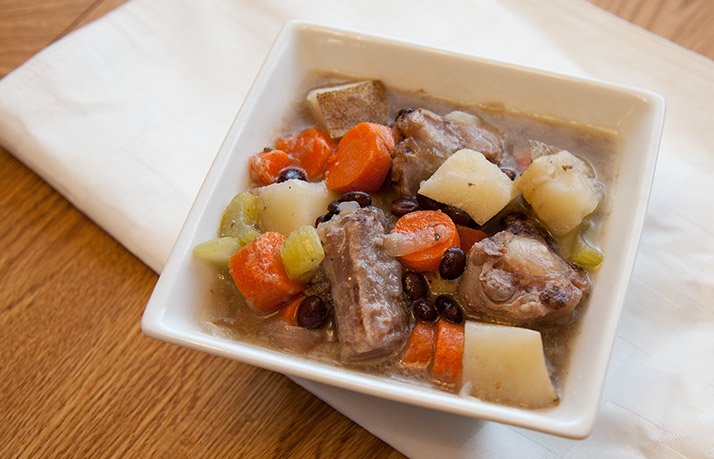
Eat It
For ease of preparation, have your butcher cut the oxtail into several pieces, which will become progressively smaller as the tail tapers to its end. Oxtail requires a long cooking time, since it's relatively gelatinous and fatty. This makes it a perfect, typically budget-friendly option for braises, soups, and stews.
When cooked low and slow in a liquid, oxtail meat becomes fall-of-the-bone tender. It's also a good candidate for crockpot cooking. Before simmering, it's best to first brown the pieces in a pan with some hot oil to help lock in the juices and bolster flavor.
References
- Conner, T.S., Richardson, A.C. & Miller, J.C. (2015). Optimal serum selenium concentrations are associated with lower depressive symptoms and negative mood among young adults. Journal of Nutrition, 145(1), 59-65.
